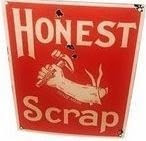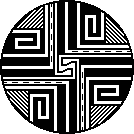I went to see Fanny Wednesday morning after classes. Duncan Steele-Park took her through her paces, circles and stops. It was a cold morning and Fanny and Duncan followed one calf in the large indoor arena to accustom her to cattle. At times, I saw her breath as a small cloud, rise softly, then evaporate. Fanny has been around cattle all her short life, but having a rider to give her commands was different. Duncan gave me a critique of her behavior in the workout and she stops really well. Her work on right-hand circles is testing her, although her left-hand circles are good. Fanny has about two more weeks with Duncan before we make a decision on her future. She is out of kindergarten, Duncan says, and in elementary school.
On the one hand, with progressive improvement, Fanny can stay in school and in another year become a futurity prospect in a crop of 750 cutting horses. Then, on the other hand, Fanny can have a good education at the hands of Duncan for a few more weeks and come back home to our place to be a good companion and safe horse for human beings. Duncan has stated that there could be reasons to bring her out of his training and put her on a decent, average road for horses that will not be a prospect for the Fort Worth futurity, but will give her experience for a comfortable, safe life with human beings. And, they with Fanny.
I do wish all of you could see Duncan and Fanny working together. He lets her be free in learning. By that I mean, he lets her be a force for herself, not him, not Duncan. He will start every session with turning her head with the rein and hackamore (no snaffle, no bit) to the left, then to the right. When he changes the gait in her circles, there is no overt spurring or talk, just a few clucks or pressure with his legs, and she adjusts. I could not see the cue Duncan was applying to get her to stop. Maybe there was a slight pressure from the hackamore for Fanny to whoa, but I could not see his cue for her to halt. And, she stops quickly.
So, I asked Duncan, What is the cue you give Fanny to whoa? As he was riding by on Fanny, Duncan said, Look at my leg and boot. I looked and when Duncan takes his boot and leg away from her flank, just slightly, she stops. All he does is take off leg and boot pressure about her flanks and she halts. Dead so, doesn’t move. Stays immobile, stopped. I thought: That’s why I pay tuition.
Fanny is fortunate. Fanny is under a stoa, a porch, of ancient pedagogy, a place with a teacher that doesn’t use a cudgel to beat the cursive into the student, but a stoa-arena that allows her to draw out of herself a strength and performance that instills confidence that she will possess, whether she is futurity bound or is ridden by a young, blondhaired lass in the greenest of nature’s pastures, enjoying the wind on her face and the gentle pressure of rider around her soft, sorrel flanks. Go, my darling, Fanny, go. I have given you the best I could.


















I don’t know what happened to my blog roll updater, but it didn’t let me know you have three new posts! All wonderful! Love your description of Duncan training Fanny. And, if I might go back, one of my favorite stops en route out west is along the Missouri River, in SD, where they have a rest stop devoted to Lewis and Clark. I’ve always been interested in their story. It’s Sacajawea country near there, too, of course. Your writing is eloquent in its earthiness.
Hi Teresa. Two of my new posts were not pinged–the one on Lewis and Clark and the other on snow. The one today has been pinged and linked to Google, so it may not be your system. I’ve wanted to follow as much as you can the Lewis and Clark trail out West. Thanks for your comment.
Great post. Believe it or not, my horses all had spur stops!! Along with a quiet whoa, a slight touch of my spurs stopped them immediately. I don’t think my trainer used the same techniques as yours, but she was extremely gentle with the horses. Lots of turning, pushing (leg yields), and repetition. She rarely got on our horses…she wanted us to do the training, so we’d know how to handle different situations during competition. BF’s trainer is awfully good too, however, with cutting it seems like the trainers do most of the training work and then the owners show up to compete. BF doesn’t want to screw up everything…at least that’s the way I see it. I loved the fact that I was training (with Anne’s guidance) my own horse. But then I doted on them, brushed, kissed, treats, and lot’s of riding. We worked weeks just on walk. I was taught to teach him to stand up, walk straight, to lift his belly, and used arc approach to turns. Everything was slow paced…then up to a trot. If he got it wrong, then back to a walk. Punishment was simply making him backup and start over. of course this description is simplified… I loved it sooo much! I miss it….
You are much more experienced than me. I started much too late to be an accomplished rider, but I work in ground training and getting them accustomed to human contact. I wish, Lynn, I had started earlier, but I have to start where I start. If Fanny goes on further, Duncan could ride her. If he doesn’t, I’ll look for someone else if Fanny remains in my care. Working weeks on a walk–yes, know what you mean. One of my friends that has worked with horses all his life said that some people think you saddle and ride like putting the keys in the ignition of a pickup and driving off. Not true, he said. Takes time, like you put in with your horses in training. I had two paints by inheritance several years ago and have added the quarter horses along the way. Prior to that, I only rode when I showed pointers in field trials. Never gave a thought about riding back then. Today, it’s different.
I like the aversive conditioning you used–make them back up and start over. No wonder you had such good horses.
I didn’t start riding until well after forty. I loved it so and got totally into it. I practiced and practiced…and other than one bad horse (Dino) my horses have been great…they taught me. My last horse, Ace, was the best horse and I think, the most beautiful horse in the world. He was soooo good, he took me right thru novice and into amateur in a just a few shows. He was amazing. I think he ended up 16th at the world show…and that’s a story because he had been so sick that we didn’t even get a chance to practice for months before the show. We took him out of his stall, saddled him and put him thru the paces. He was a good boy, considering that he hadn’t been ridden in months. Jack, he was 16.3, all black and a tail that I had to trim before each show…it was so long and thick. He took my breath away and I babied him. He died of the stangles vaccine…can you believe that? The vaccine!!! Funny…I’ve really been thinking about the stables and riding. In fact, yesterday I wrote a post about one of my experiences at the barn. Must be a tad of spring fever going around…
Wow, 16.3 and black. What a horse. No practice because of sickness and then performed. What those horses will do for themselves and us. I’ll be sure and read your post.
Oooh forgot…the thing I love about horses is that there’s something for everyone. Like you doing ground work or using them for field trials. Some people just love the babies, some like the draft pulling, some raise stallions. Many simply take pictures or have them for lawn ornaments…whatever…it’s all good!! Dag gum it…you got me going and I could yak about horses all day…LOL
Oh, yes, something for everyone. And, all good. I’m glad you are commenting on these horses.
Jack, I’m glad Teresa mentioned you hadn’t shown up for I also missed your blogs. Don’t like doing that! Also, didn’t realize there was a ping connection to the blog roll (tho I always ping). You’re most fortunate to have Duncan. I’m a firm believer that a gentle hand/foot moves mountains. And Fanny is as gorgeous as a mountain scene at dawn. I think this is going to work out really well for you. I’m not a rider, wish I was, but enjoy watching/reading what others do and, kinda odd, just leaning against the railing and getting lost in whole bit, from dust kicked up to that perspiration drippin’. You’ve got some super blogs, Jack. Great work!
Kittie, I hope it does work out. Duncan is a rare find, indeed, and so is the GCH Land & Cattle Co. he is resident trainer for. Frankly, it was luck that got me in touch with him and he had an opening and I took it. Now I am out of steerage and in first class. Bumped up, so to speak. I admit, it’s scary. How Fanny and I got there is another story.
Jack: How wonderful for you and Fanny to have such a talented person available to you. I’m afraid I know nothing about horse training. Are his techniques similar in any way to the ones I’ve seen on RFTV by those folks in Colorado (the Parellis, pardon if I’ve misspelled)? Seems like using lots of love and intuition vs harsher techniques. I have met some women here in Taos that have taken their horses and gone to stay with them for a month at a time; they can’t say enough wonderful things about their experiences there. Sounds like magic to me.
Martie: Thank you for your comment. Yes, are correct about the Parelli trainers. Really good people, more famous than Duncan and always willing to demonstrate their techniques.
Takes the foot away and she stops. Once read it makes so much sense, along with the soft/subtle cues for other responses. Fanny has the luck of your caring enough to give her time with Duncan Steele-Park, to assist in revealing her next best path. Wonderful time isn’t it, when trainers of his ilk are available and getting the respect they deserve? We have one out here on the peninsula where we live. He does some demo training with folks horses during one of the small summer fairs. During breaks from our watershed council booth, I love to go watch them. Each with the other, gaining trust, finding the path. Gentle all the way. Thanks for this piece Jack. Lovely. Selfishly, I’m pulling for Fanny having endless years with that blond haired lass in those green pastures of yours.
Yes, it is good to find a trainer like that. I like summer fairs. Down here it’s awfully hot, so our fairs are in the fall. I like to watch the training and see the connection between horse and rider. Thank you for your comment, Chris.